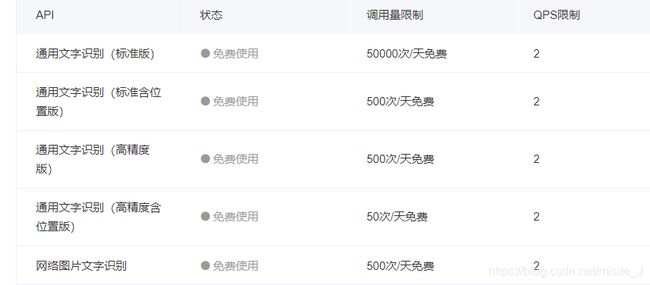- 【Pyhton】文件读取:读取整个(大型)文件
莫斯利安有点甜
pythonpython开发语言
正常情况下,如果文件不是很大,内存能够满足要求,使用内存读取就ok读取大型文件时,直接将整个文件内容加载到内存中可能会导致内存不足的问题。为了避免这种情况,Python提供了多种高效的方法来逐块或逐行读取大型文件。以下是几种常见的方法:方法1:逐行读取逐行读取文件是一种非常高效的方式,因为它一次只处理文件的一行,不会占用过多内存。withopen('large_file.txt','r',enco
- 【Python】文件应用:在with外部使用读取到的文件
莫斯利安有点甜
pythonpython开发语言服务器
在Python中,使用withopen打开文件是一种常用的方式,它可以自动管理文件的打开和关闭。但是,文件只能在with内部使用,若要在withopen之外使用文件对象,可以通过以下几种方式实现:使用readlines()方法创建一个包含各行内容的列表使用readlines()方法可以一次性读取文件的所有行,并将它们存储在一个列表中。这种方式非常适合在withopen块中读取文件内容,然后在块之外
- 【Python】类中的参数传递
莫斯利安有点甜
pythonpython开发语言前端
目录1`__init__`方法中的参数传递1.1有默认值的参数1.2没有默认值的参数1.3混合使用有默认值和无默认值的参数2类中方法的参数传递2.1从类的外部调用方法2.2从类的内部调用方法更多示例:传递多个参数3注意事项1__init__方法中的参数传递在Python中,__init__方法中的参数是否必须在实例化类时给出,取决于这些参数是否有默认值。以下是两种情况的详细说明:1.1有默认值的参
- 【Python】if __name__ == “__main__“:
莫斯利安有点甜
pythonpython开发语言
目录1.if__name__=="__main__":基本介绍2.使用场景3.实际应用示例1:简单的模块示例2:包含多个函数和类的模块4.高级用法动态模块加载多线程或多进程中的使用5.注意事项模块名称的动态性:包中的使用:避免意外执行代码:6.最佳实践封装入口逻辑:模块化设计:7.相关资源1.ifname==“main”:基本介绍if__name__=="__main__":是Python中一种常
- python-26-回调函数用法和基于python发送邮件
皮皮冰燃
python3python
文章目录1什么是回调函数?1.1回调函数1.2回调函数的来源2回调示例2.1示例一2.1.1even.py2.1.2callback_demo.py2.2示例二2.2.1普通函数调用2.2.2回调函数2.3中间函数的调用者3QQ邮箱3.1POP3用于收取邮件3.2IMAP用于收取邮件3.3SMTP用于发送邮件3.4python发送邮件4参考附录1什么是回调函数?1.1回调函数回调函数就是一个被作为
- PyMySQL:高级用法全解析
在数据驱动的时代,数据库操作是软件开发中至关重要的一环。PyMySQL作为Python中操作MySQL数据库的一个强大库,为开发者提供了便捷高效的数据库交互方式。在这篇博客中,我们将深入探讨PyMySQL的高级用法,带你领略其强大之处。一、连接池的构建与使用在实际应用中,频繁地创建和销毁数据库连接是非常耗时且低效的。连接池的出现就是为了解决这个问题。以下是使用PyMySQL构建连接池的示例:imp
- PyMySQL的使用方法有哪些?怎么用?
骨灰级收藏家
互联网python爬虫mysqlPythonmysql操作系统
PyMySQL的使用方法有哪些?怎么用?PyMySQL一个纯Python实现的MySQL客户端库,支持兼容Python3用于代替MySQLdb,其使用方法和MySQLdb几乎相同,但目前pymysql支持python3.x而后者不支持3.x版本。学习目标:能够使用PyMySQL完成数据库的增删改查1.思考如何实现将100000条数据插入到MySQL数据库?答案:如果使用之前学习的MySQL客户端来
- 今日Github热门仓库推荐2025-07-08
今日Github热门仓库推荐2025-07-08如果让AI分别扮演后端开发人员和前端开发人员,然后看看他们分别对github每天的trending仓库感兴趣的有哪些,并且给出他感兴趣的理由,那会发生什么呢?本内容通过Python+AI生成,项目地址跳转后端开发人员推荐仓库名称:rustfs/rustfs仓库推荐理由:作为一个有10年后端开发经验的工程师,我对高性能和分布式系统有浓厚的兴趣。Rust
- 有了 25k Star 的MediaCrawler爬虫库加持,三分钟搞定某红书、某音等平台爬取!
前端后端爬虫
大家好,我是程序员凌览。今天给大家介绍一个超实用的Python爬虫实战项目——MediaCrawler。这个项目可以实现小红书、抖音、快手、B站和微博的爬虫功能,覆盖了当下热门的自媒体平台。它能够高效抓取这些平台上的视频、图片、评论、点赞和转发等信息。MediaCrawler支持的平台及功能如下图:快速开始下载项目代码访问MediaCrawlerGitHub仓库,点击“Code”按钮下载项目代码。
- 【机器学习|学习笔记】随机森林(Random Forest, RF)详解,附代码。
努力毕业的小土博^_^
机器学习基础算法优质笔记1机器学习学习笔记随机森林人工智能
【机器学习|学习笔记】随机森林(RandomForest,RF)详解,附代码。【机器学习|学习笔记】随机森林(RandomForest,RF)详解,附代码。文章目录【机器学习|学习笔记】随机森林(RandomForest,RF)详解,附代码。前言起源随机子空间法与Bagging的萌芽原理算法机制理论保障发展应用优缺点优点缺点Python实现示例(Scikit-learn)欢迎铁子们点赞、关注、收藏
- Python (类型提示)指定参数类型: 以及参数注解
斐非韭
pythonpythonpycharm
类型标注的使用类型标注(Typeannotations)是一种直接的方式,并且是类型文档中最常见到的那种方式。声明一个函数参数的类型,只要在参数名称的后面加个":“号,带上类型名称就行了。声明函数的返回值类型,只要在函数声明结束之前,也就是”:“号之前加入一个”->",带上类型名称。常见数据类型int,long,float:整型,长整形,浮点型bool,str:布尔型,字符串类型List,Tupl
- python3 annotations
weixin_30615767
python开发工具
引文与描述:AddingarbitrarymetadataannotationstoPythonfunctionsandvariables说说我的体会:类似编译的作用,能够帮助你尽早地避免错误1.不支持Python2+>>>deftest_annotation_py2(a_str:str):File"",line1deftest_annotation_py2(a_str:str):^SyntaxE
- python聚合函数aggregate和annotate的小坑
你喝不喝热水啊
pythonpython
最近在工作项目中发现了一个坑,就是关于aggregate和annotate这两个聚合函数的区别用法。现在百度上很多搜索的答案对初学者不是很友好,就是直接给出了一句代码,然后也不讲清楚,就用annotate后的结果取第一条(如:a[0])取值。这样就导致很多初学者也不会去思考太多,直接copy下来就用,最后导致数据汇总有问题(也不止初学者了,项目组里面有些工作了几年的人都不知道二者区别,也是百度到了
- **深度解析Annotated Jieba:Python中的高效中文分词库**
深度解析AnnotatedJieba:Python中的高效中文分词库去发现同类优质开源项目:https://gitcode.com/项目简介是一个基于Jieba的增强版分词库,为了解决原Jieba库在复杂场景下的需求,它提供了更丰富的功能和更友好的API设计。该项目由USTCDane开发并维护,旨在帮助开发者更好地理解和使用Jieba进行中文文本处理。技术分析1.代码注释与文档AnnotatedJ
- python中使用annotate时,报错误
TypeErrorTraceback(mostrecentcalllast)CellIn[58],line161159plt.xlabel("FPR")160plt.ylabel("TPR")-->161plt.annotate(xy=(.4,.2),xytext=(.5,.2),s='ROCcurve(area=%0.2f)'%auc_test)TypeError:annotate()missi
- Python 异步爬虫(aiohttp)高效抓取新闻数据
小白学大数据
python爬虫开发语言
一、异步爬虫的优势在传统的同步爬虫中,爬虫在发送请求后会阻塞等待服务器响应,直到收到响应后才会继续执行后续操作。这种模式在面对大量请求时,会导致大量的时间浪费在等待响应上,爬取效率较低。而异步爬虫则等待可以在服务器响应的同时,继续执行其他任务,大大提高了爬取效率。aiohttp是一个支持异步请求的Python库,它基于asyncio框架,可以实现高效的异步网络请求。使用aiohttp构建异步爬虫,
- Python破解东方财富反爬机制:热榜数据获取
小白学大数据
python开发语言
一、了解东方财富热榜数据东方财富热榜数据包括人气榜、飙升榜等多种类型,涵盖了A股市场、ETF基金、港股市场和美股市场等。这些数据通常每5分钟自动更新一次,能够动态展示最新的市场走势。热榜数据可以帮助投资者了解市场的热点和投资者的情绪倾向。二、反爬机制分析东方财富网的反爬机制主要包括以下几种:限制访问频率:频繁的请求可能会被识别为爬虫行为,导致IP被封禁。动态加载内容:部分数据通过JavaScrip
- AIGC 领域 AI 写作如何实现智能内容推荐
SuperAGI2025
AIGC人工智能ai
AIGC领域AI写作如何实现智能内容推荐关键词:AIGC、AI写作、智能内容推荐、推荐算法、用户画像摘要:本文聚焦于AIGC领域中AI写作的智能内容推荐实现。首先介绍了该主题的背景,包括目的、预期读者等内容。接着阐述了核心概念与联系,如AIGC、AI写作、智能内容推荐等概念及其关联。详细讲解了核心算法原理,包括协同过滤、基于内容的推荐等,并给出Python代码示例。探讨了相关数学模型和公式,通过具
- 构建一个Python爬虫系统:从各大旅游网站抓取旅游价格数据并进行数据分析
Python爬虫项目
2025年爬虫实战项目python爬虫旅游自动化开发语言selenium数据分析
一、前言随着互联网的普及和旅游业的发展,旅游价格的实时获取和分析变得尤为重要。对于旅游爱好者、企业、甚至是政府部门而言,实时获取旅游价格数据并进行分析能够帮助他们做出更好的决策。然而,许多旅游网站的数据并不公开,爬取这些网站的数据并加以分析成为一个实际需求。本博客将介绍如何构建一个Python爬虫系统,该系统能够从多个主要旅游网站(如携程、飞猪、途牛、马蜂窝等)抓取旅游价格数据,定时更新数据,并进
- 【Python】Python类型标注革命:Annotated类型深度解析与实战
田辛 | 田豆芽
Pythonpython设计模式类型驱动设计
一、初识Annotated:类型系统的拓展革命作为深耕Python领域多年的开发者,田辛老师在第一次接触typing.Annotated时的感受可以用"惊艳"来形容。这个Python3.9引入的类型构造器,为我们打开了元数据整合的新维度。基本语法结构:fromtypingimportAnnotatedTemperature=Annotated[float,"Celsius"]这里我们创建了一个带有
- 深度学习Pytorch(一)
Bgemini
深度学习pytorch深度学习python
深度学习Pytorch(一)前言:必须使用英伟达显卡才能使用cuda(显卡加速)!移除环境:condaremove-npytorch--all一、安装Pytorch下载Anaconda打开AnacondaPrompt创建一个Pytorch环境:condacreate-npytorchpython=3.9激活Pytorch环境:condaactivatepytorch查看当前包:piplist安装P
- 华为OD机试 2025B卷 - 字符串加密 (C++ & Python & JAVA & JS & C语言)
YOLO大师
华为od华为OD机试2025B卷华为OD2025B卷华为OD机考2025B卷
2025B卷目录点击查看:华为OD机试2025B卷真题题库目录|机考题库+算法考点详解2025B卷100分题型题目描述给你一串未加密的字符串str,通过对字符串的每一个字母进行改变来实现加密,加密方式是在每一个字母str[i]偏移特定数组元素a[i]的量,数组a前三位已经赋值:a[0]=1,a[1]=2,a[2]=4。当i>=3时,数组元素a[i]=a[i-1]+a[i-2]+a[i-3]。例如:
- 俄罗斯方块AI深度解析:从算法原理到实现细节
智算菩萨
Python小游戏项目实战人工智能算法
俄罗斯方块AI深度解析:从算法原理到实现细节前言俄罗斯方块,这个诞生于1984年的经典游戏,至今仍然是人工智能研究领域的热门课题。当简单的几何形状在网格中不断下落时,看似简单的规则背后却隐藏着复杂的策略决策问题。本文将深入剖析一个基于Python实现的俄罗斯方块AI系统,探讨其如何通过精巧的算法设计实现近乎完美的自动游戏表现。游戏状态的数字化抽象在构建任何游戏AI之前,我们首先需要将人类直观理解的
- 双系统如何做接口认证-V2
CATTLECODE
python开发语言
现有A系统,B系统,A系统启动的时候调用B系统的注册接口API1(把A系统配置信息注册到B系统),A系统定时向B系统接口AP2发送心跳信息,B系统根据业务情况,调用A系统的业务接口AP3,请设计两系统的接口认证方式。以下是为A系统(Python)与B系统(SpringBoot)设计的双向安全认证方案及关键代码实现,结合JWT、数字签名和HTTPS加密,确保注册、心跳、业务调用的安全可靠。整体认证方
- Python实现MCP Server的完整Demo
CATTLECODE
python开发语言
mcpserverfromfastmcpimportFastMCPimportlogging#配置日志记录logging.basicConfig(level=logging.INFO)logger=logging.getLogger(__name__)mcp=FastMCP("DemoServer")@mcp.tool()asyncdefcalculate(a:float,b:float,op:s
- 华为OD机考2025B卷 - 最多几个直角三角形(Java & Python& JS & C++ & C )
算法大师
最新华为OD机试真题华为OD机试真题(Java/JS/Py/C)javapython华为OD机考2025B卷javascript华为odC++C语言
最新华为OD机试真题目录:点击查看目录华为OD面试真题精选:点击立即查看题目描述有N条线段,长度分别为a[1]-a[n]。现要求你计算这N条线段最多可以组合成几个直角三角形。每条线段只能使用一次,每个三角形包含三条线段。输入描述第一行输入一个正整数T(1#
- Day08-Flask 或 Django 简介:构建 Web 应用程序
清幽竹客
Pythonflaskdjangopython
Flask或Django简介:构建Web应用程序网络开发领域提供了丰富的工具和框架,而Python作为一门多功能的语言,在构建健壮且可扩展的Web应用方面脱颖而出。本课程将作为你使用Python进行Web开发的入门指南,特别聚焦于两个流行的框架:Flask和Django。我们将探讨这些框架背后的基本概念,为你创建动态Web应用和RESTfulAPI奠定基础。理解这些框架对于将AI模型集成到Web应
- 【附源码】基于flask框架求职招聘网站 (python+mysql+论文)
本系统(程序+源码)带文档lw万字以上文末可获取本课题的源码和程序系统程序文件列表系统的选题背景和意义选题背景:随着互联网技术的飞速发展,网络求职招聘已经成为了现代人才市场的一大趋势。传统的求职招聘方式逐渐被线上平台所取代,这主要得益于网络平台的便捷性、实时性和广泛性。然而,现有的求职招聘网站虽然数量众多,但质量参差不齐,用户体验也各不相同。一些求职者和招聘者在面对海量信息时,往往会感到无所适从,
- 解决更新python版本后,虚拟环境不可用的问题
Superstarimage
diffusers编程pythonpython人工智能开发语言
因为安装xformers,需要额外加装triton,而triton需要的python版本(3.10)高于我当前虚拟环境的版本(3.8),因此博主手动提升了当前虚拟环境的版本:condainstallpython=3.10结果应用该虚拟环境时,始终报如下错误:(TrainControlNet)F:\XYX\Documents\SpongeCakeInverse\AITools\the3rdparty
- Hadoop MapReduce入门
且行且安~
数据分析进阶之路Linux命令hadoopMapReduce入门
入门简介计算过程分为两个阶段Map和ReduceMap阶段并行处理输入数据Reduce阶段对Map结果进行汇总针对python语言来说:map函数或者reduce函数来说,输出的数据格式为元组tuple一个简单的MapReduce程序只需要指定map()reduce()input()output()剩下的由框架完成。Linux常见命令:-读取文件(文本文件,在Windows下使用记事本打开的文件)
- Algorithm
香水浓
javaAlgorithm
冒泡排序
public static void sort(Integer[] param) {
for (int i = param.length - 1; i > 0; i--) {
for (int j = 0; j < i; j++) {
int current = param[j];
int next = param[j + 1];
- mongoDB 复杂查询表达式
开窍的石头
mongodb
1:count
Pg: db.user.find().count();
统计多少条数据
2:不等于$ne
Pg: db.user.find({_id:{$ne:3}},{name:1,sex:1,_id:0});
查询id不等于3的数据。
3:大于$gt $gte(大于等于)
&n
- Jboss Java heap space异常解决方法, jboss OutOfMemoryError : PermGen space
0624chenhong
jvmjboss
转自
http://blog.csdn.net/zou274/article/details/5552630
解决办法:
window->preferences->java->installed jres->edit jre
把default vm arguments 的参数设为-Xms64m -Xmx512m
----------------
- 文件上传 下载 解析 相对路径
不懂事的小屁孩
文件上传
有点坑吧,弄这么一个简单的东西弄了一天多,身边还有大神指导着,网上各种百度着。
下面总结一下遇到的问题:
文件上传,在页面上传的时候,不要想着去操作绝对路径,浏览器会对客户端的信息进行保护,避免用户信息收到攻击。
在上传图片,或者文件时,使用form表单来操作。
前台通过form表单传输一个流到后台,而不是ajax传递参数到后台,代码如下:
<form action=&
- 怎么实现qq空间批量点赞
换个号韩国红果果
qq
纯粹为了好玩!!
逻辑很简单
1 打开浏览器console;输入以下代码。
先上添加赞的代码
var tools={};
//添加所有赞
function init(){
document.body.scrollTop=10000;
setTimeout(function(){document.body.scrollTop=0;},2000);//加
- 判断是否为中文
灵静志远
中文
方法一:
public class Zhidao {
public static void main(String args[]) {
String s = "sdf灭礌 kjl d{';\fdsjlk是";
int n=0;
for(int i=0; i<s.length(); i++) {
n = (int)s.charAt(i);
if((
- 一个电话面试后总结
a-john
面试
今天,接了一个电话面试,对于还是初学者的我来说,紧张了半天。
面试的问题分了层次,对于一类问题,由简到难。自己觉得回答不好的地方作了一下总结:
在谈到集合类的时候,举几个常用的集合类,想都没想,直接说了list,map。
然后对list和map分别举几个类型:
list方面:ArrayList,LinkedList。在谈到他们的区别时,愣住了
- MSSQL中Escape转义的使用
aijuans
MSSQL
IF OBJECT_ID('tempdb..#ABC') is not null
drop table tempdb..#ABC
create table #ABC
(
PATHNAME NVARCHAR(50)
)
insert into #ABC
SELECT N'/ABCDEFGHI'
UNION ALL SELECT N'/ABCDGAFGASASSDFA'
UNION ALL
- 一个简单的存储过程
asialee
mysql存储过程构造数据批量插入
今天要批量的生成一批测试数据,其中中间有部分数据是变化的,本来想写个程序来生成的,后来想到存储过程就可以搞定,所以随手写了一个,记录在此:
DELIMITER $$
DROP PROCEDURE IF EXISTS inse
- annot convert from HomeFragment_1 to Fragment
百合不是茶
android导包错误
创建了几个类继承Fragment, 需要将创建的类存储在ArrayList<Fragment>中; 出现不能将new 出来的对象放到队列中,原因很简单;
创建类时引入包是:import android.app.Fragment;
创建队列和对象时使用的包是:import android.support.v4.ap
- Weblogic10两种修改端口的方法
bijian1013
weblogic端口号配置管理config.xml
一.进入控制台进行修改 1.进入控制台: http://127.0.0.1:7001/console 2.展开左边树菜单 域结构->环境->服务器-->点击AdminServer(管理) &
- mysql 操作指令
征客丶
mysql
一、连接mysql
进入 mysql 的安装目录;
$ bin/mysql -p [host IP 如果是登录本地的mysql 可以不写 -p 直接 -u] -u [userName] -p
输入密码,回车,接连;
二、权限操作[如果你很了解mysql数据库后,你可以直接去修改系统表,然后用 mysql> flush privileges; 指令让权限生效]
1、赋权
mys
- 【Hive一】Hive入门
bit1129
hive
Hive安装与配置
Hive的运行需要依赖于Hadoop,因此需要首先安装Hadoop2.5.2,并且Hive的启动前需要首先启动Hadoop。
Hive安装和配置的步骤
1. 从如下地址下载Hive0.14.0
http://mirror.bit.edu.cn/apache/hive/
2.解压hive,在系统变
- ajax 三种提交请求的方法
BlueSkator
Ajaxjqery
1、ajax 提交请求
$.ajax({
type:"post",
url : "${ctx}/front/Hotel/getAllHotelByAjax.do",
dataType : "json",
success : function(result) {
try {
for(v
- mongodb开发环境下的搭建入门
braveCS
运维
linux下安装mongodb
1)官网下载mongodb-linux-x86_64-rhel62-3.0.4.gz
2)linux 解压
gzip -d mongodb-linux-x86_64-rhel62-3.0.4.gz;
mv mongodb-linux-x86_64-rhel62-3.0.4 mongodb-linux-x86_64-rhel62-
- 编程之美-最短摘要的生成
bylijinnan
java数据结构算法编程之美
import java.util.HashMap;
import java.util.Map;
import java.util.Map.Entry;
public class ShortestAbstract {
/**
* 编程之美 最短摘要的生成
* 扫描过程始终保持一个[pBegin,pEnd]的range,初始化确保[pBegin,pEnd]的ran
- json数据解析及typeof
chengxuyuancsdn
jstypeofjson解析
// json格式
var people='{"authors": [{"firstName": "AAA","lastName": "BBB"},'
+' {"firstName": "CCC&
- 流程系统设计的层次和目标
comsci
设计模式数据结构sql框架脚本
流程系统设计的层次和目标
- RMAN List和report 命令
daizj
oraclelistreportrman
LIST 命令
使用RMAN LIST 命令显示有关资料档案库中记录的备份集、代理副本和映像副本的
信息。使用此命令可列出:
• RMAN 资料档案库中状态不是AVAILABLE 的备份和副本
• 可用的且可以用于还原操作的数据文件备份和副本
• 备份集和副本,其中包含指定数据文件列表或指定表空间的备份
• 包含指定名称或范围的所有归档日志备份的备份集和副本
• 由标记、完成时间、可
- 二叉树:红黑树
dieslrae
二叉树
红黑树是一种自平衡的二叉树,它的查找,插入,删除操作时间复杂度皆为O(logN),不会出现普通二叉搜索树在最差情况时时间复杂度会变为O(N)的问题.
红黑树必须遵循红黑规则,规则如下
1、每个节点不是红就是黑。 2、根总是黑的 &
- C语言homework3,7个小题目的代码
dcj3sjt126com
c
1、打印100以内的所有奇数。
# include <stdio.h>
int main(void)
{
int i;
for (i=1; i<=100; i++)
{
if (i%2 != 0)
printf("%d ", i);
}
return 0;
}
2、从键盘上输入10个整数,
- 自定义按钮, 图片在上, 文字在下, 居中显示
dcj3sjt126com
自定义
#import <UIKit/UIKit.h>
@interface MyButton : UIButton
-(void)setFrame:(CGRect)frame ImageName:(NSString*)imageName Target:(id)target Action:(SEL)action Title:(NSString*)title Font:(CGFloa
- MySQL查询语句练习题,测试足够用了
flyvszhb
sqlmysql
http://blog.sina.com.cn/s/blog_767d65530101861c.html
1.创建student和score表
CREATE TABLE student (
id INT(10) NOT NULL UNIQUE PRIMARY KEY ,
name VARCHAR
- 转:MyBatis Generator 详解
happyqing
mybatis
MyBatis Generator 详解
http://blog.csdn.net/isea533/article/details/42102297
MyBatis Generator详解
http://git.oschina.net/free/Mybatis_Utils/blob/master/MybatisGeneator/MybatisGeneator.
- 让程序员少走弯路的14个忠告
jingjing0907
工作计划学习
无论是谁,在刚进入某个领域之时,有再大的雄心壮志也敌不过眼前的迷茫:不知道应该怎么做,不知道应该做什么。下面是一名软件开发人员所学到的经验,希望能对大家有所帮助
1.不要害怕在工作中学习。
只要有电脑,就可以通过电子阅读器阅读报纸和大多数书籍。如果你只是做好自己的本职工作以及分配的任务,那是学不到很多东西的。如果你盲目地要求更多的工作,也是不可能提升自己的。放
- nginx和NetScaler区别
流浪鱼
nginx
NetScaler是一个完整的包含操作系统和应用交付功能的产品,Nginx并不包含操作系统,在处理连接方面,需要依赖于操作系统,所以在并发连接数方面和防DoS攻击方面,Nginx不具备优势。
2.易用性方面差别也比较大。Nginx对管理员的水平要求比较高,参数比较多,不确定性给运营带来隐患。在NetScaler常见的配置如健康检查,HA等,在Nginx上的配置的实现相对复杂。
3.策略灵活度方
- 第11章 动画效果(下)
onestopweb
动画
index.html
<!DOCTYPE html PUBLIC "-//W3C//DTD XHTML 1.0 Transitional//EN" "http://www.w3.org/TR/xhtml1/DTD/xhtml1-transitional.dtd">
<html xmlns="http://www.w3.org/
- FAQ - SAP BW BO roadmap
blueoxygen
BOBW
http://www.sdn.sap.com/irj/boc/business-objects-for-sap-faq
Besides, I care that how to integrate tightly.
By the way, for BW consultants, please just focus on Query Designer which i
- 关于java堆内存溢出的几种情况
tomcat_oracle
javajvmjdkthread
【情况一】:
java.lang.OutOfMemoryError: Java heap space:这种是java堆内存不够,一个原因是真不够,另一个原因是程序中有死循环; 如果是java堆内存不够的话,可以通过调整JVM下面的配置来解决: <jvm-arg>-Xms3062m</jvm-arg> <jvm-arg>-Xmx
- Manifest.permission_group权限组
阿尔萨斯
Permission
结构
继承关系
public static final class Manifest.permission_group extends Object
java.lang.Object
android. Manifest.permission_group 常量
ACCOUNTS 直接通过统计管理器访问管理的统计
COST_MONEY可以用来让用户花钱但不需要通过与他们直接牵涉的权限
D


